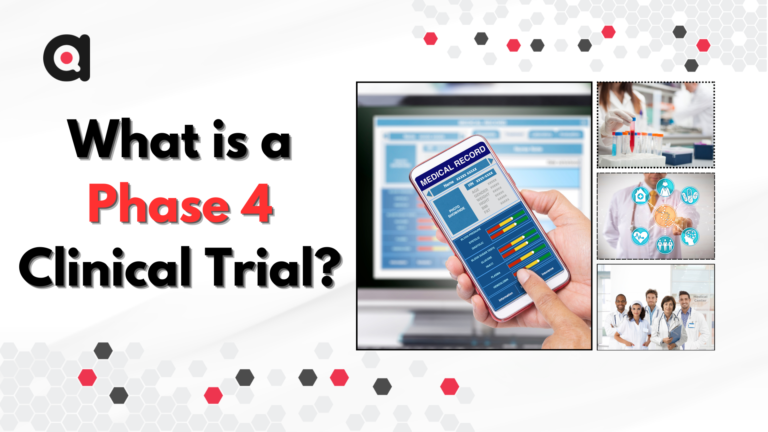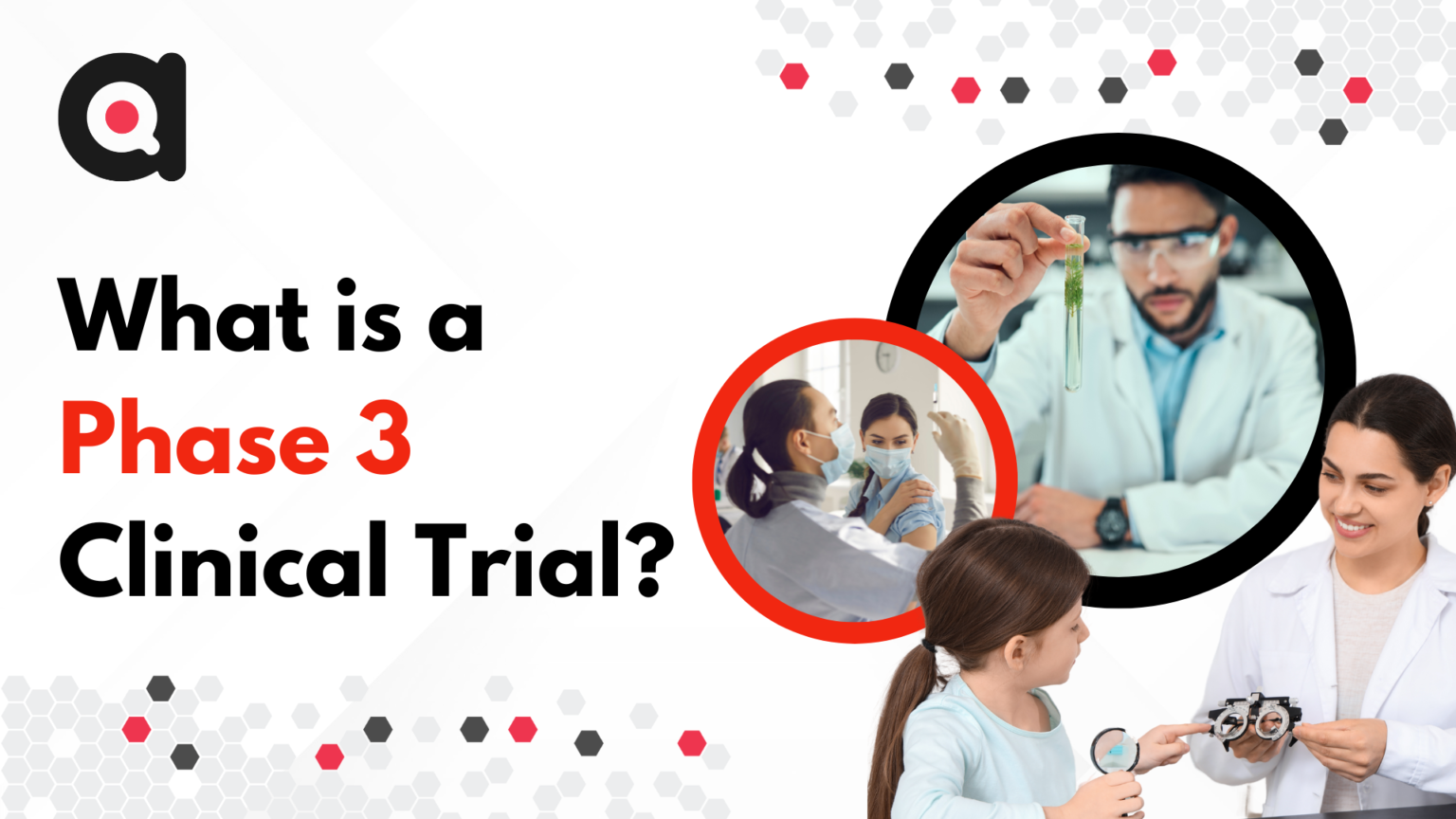What is a Phase 4 Clinical Trial?
Table of Contents
Toggle
Clinical trial Phase 4 is the post-marketing phase of drug development and is conducted after a drug has been approved to be available in the market. It assesses the introduced intervention’s long-term safety, effectiveness, and other aspects in real-world conditions.
Related: Clinical Trial Management System
Let’s get to the details of what is a phase 4 clinical trial all about:
Post-marketing surveillance in phase 4 clinical trials involves the continuous monitoring of a drug or medical device’s safety once it has been approved for use. This is achieved by collecting and analysing data from various sources, including healthcare providers, patients, and regulatory agencies. The goal is to identify any unforeseen adverse effects or long-term safety concerns that may not have been apparent during earlier phases of clinical development.
Long-term safety assessments are conducted to identify rare or delayed adverse effects that might not have been observed in the shorter duration of earlier phases. This is achieved through the establishment of long-term follow-up programs and the utilisation of databases and retrospective studies. Monitoring safety over an extended period allows researchers to provide a comprehensive understanding of the intervention’s safety profile in real-world conditions.
Efficacy and effectiveness studies in phase 4 clinical trials evaluate how well the intervention performs in real-world settings. These studies, including observational research and comparative effectiveness studies, aim to assess the intervention’s effectiveness beyond the controlled conditions of earlier clinical trials. The focus is on understanding its impact on patient outcomes and the broader population.
Health economics and outcomes research (HEOR) enables researchers to assess the economic impact and real-world outcomes of the intervention. This involves analysing healthcare utilisation, cost-effectiveness, and patient-reported outcomes through economic modelling and health services research. The goal is to provide a comprehensive understanding of the intervention’s value in the broader healthcare landscape.
Registry studies in phase 4 clinical trials involve the establishment and maintenance of patient registries to track outcomes and trends. Collecting and analysing data from large groups of patients with a specific condition enables researchers to gain insights into the intervention’s long-term impact and effectiveness in diverse patient populations.
Risk management strategies in phase 4 are implemented to minimise known risks associated with the intervention. This involves collaboration with healthcare professionals to create plans for risk mitigation, updating product labelling, and communicating safety information to healthcare providers and patients.
Labelling updates in phase 4 clinical trials are aimed at modifying product labels based on new safety or efficacy information. Collaborating with regulatory agencies, manufacturers work to update product labelling to ensure that healthcare providers and patients have the most accurate and up-to-date information regarding the intervention’s use, benefits, and risks.
Communication and education strategies are crucial in phase 4 to disseminate safety information to healthcare providers and the public. This involves using various channels, such as medical publications, educational programs, and direct communication with healthcare professionals, to inform stakeholders about important safety updates and promote informed decision-making.
Pharmacovigilance activities in phase 4 include monitoring and evaluating adverse events and product complaints. Researchers establish systems to collect and assess reports of adverse events, conduct ongoing safety reviews, and take appropriate actions to ensure patient safety. All this is integral to the continuous monitoring of the intervention’s safety profile.
Compliance monitoring in phase 4 aims to ensure that healthcare providers and patients adhere to recommended usage guidelines. Implementing monitoring programs allows researchers to assess and improve compliance with dosing regimens, patient monitoring, and other recommended practices, ultimately enhancing the intervention’s safe and effective use in real-world scenarios.
Wrapping Up
It is worth noticing that best practices for Phase 4 trials include implementing robust surveillance systems, leveraging real-world evidence, collaborating with healthcare providers, ensuring long-term follow-up, and maintaining transparent communication. Moreover, researchers should also encourage patient engagement, employ adaptive trial designs, and consider a global perspective for diverse insights. All of this is crucial to ensure desired outcomes.
Related Articles

Industry News
A Clinical Trial Management System (CTMS) is a specialised, all-encompassing project management software tailored to guide a research team from the study’s inception—through the enrolment and oversight phases to the study’s conclusion…
AQ

Industry News
Phase 3 clinical trials, lasting for over 5 years, represent a critical stage in the development of new drugs and medical treatments. They are conducted after preliminary evidence suggesting effectiveness of the drug has been obtained in Phase 2 trials.
AQ

